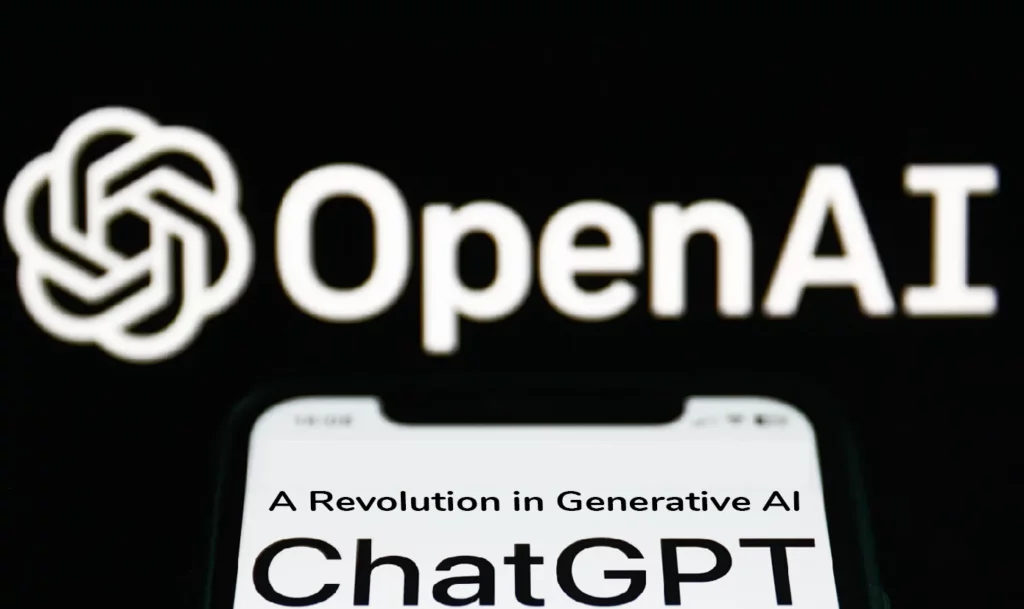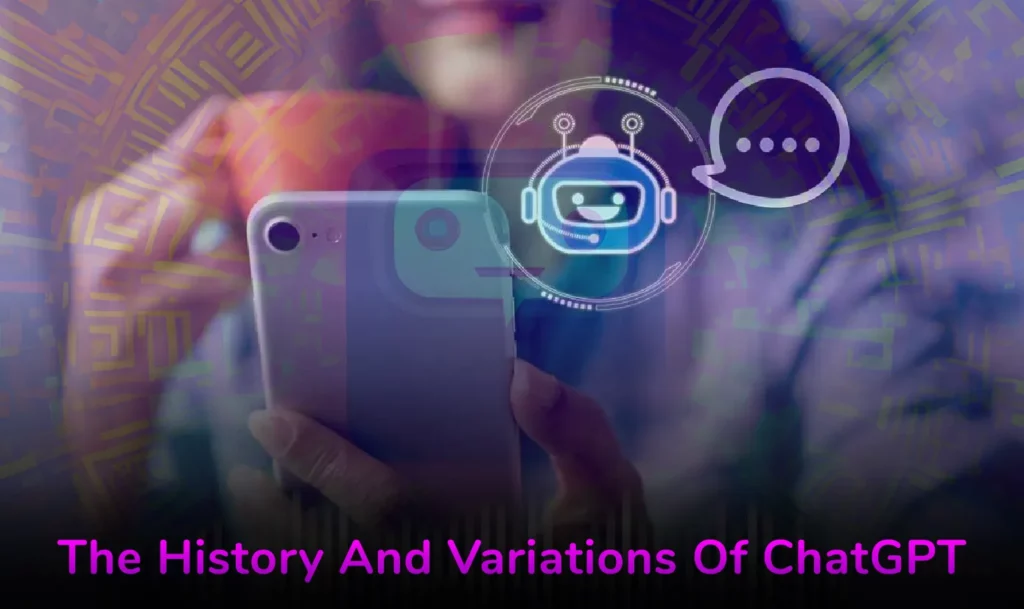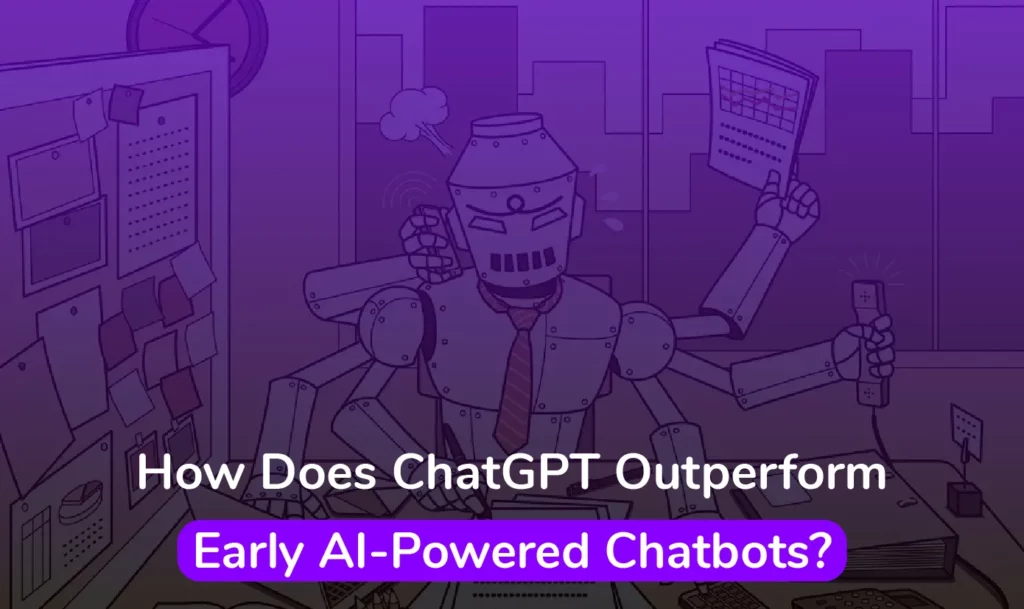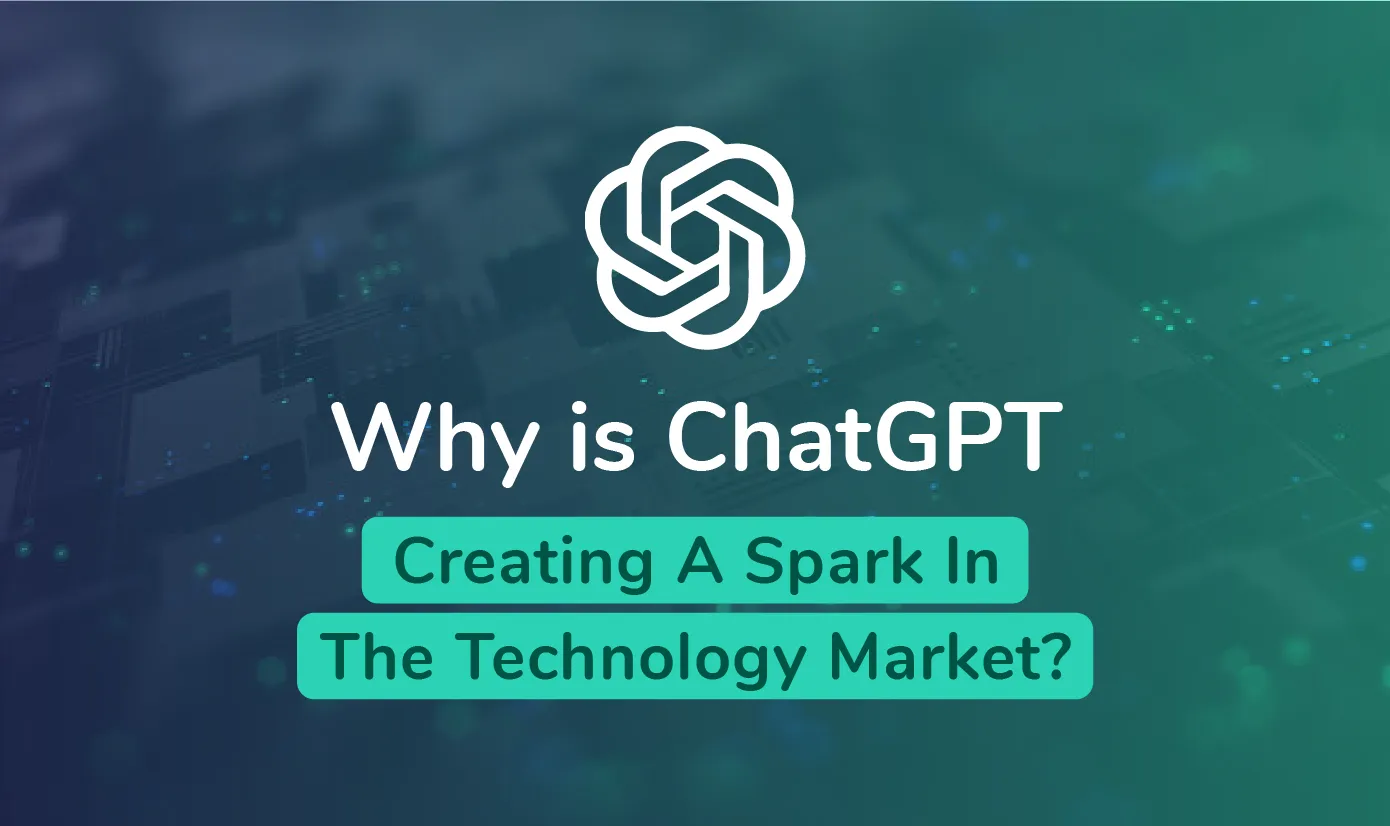The official introduction of ChatGPT, a new paradigm for conversational AI, was recently announced by the artificial intelligence (AI) research company OpenAI. According to OpenAI, ChatGPT can “answer follow-up questions, admit its mistakes, debate faulty premises, and reject inappropriate requests” because of the interaction offered by this platform.

Since its release, social media has been a hive of conversation about this new invention’s promise—and risks—covering everything from its capacity to debug software to its capability to generate college-level essays. To address the more enormous ramifications of this breakthrough and the steps that data and analytics (D&A) professionals can take to ensure the appropriate use of such technologies, we sat down with Bern Elliot, the VP Analyst at Gartner.
A Revolution in Generative AI: ChatGPT
Before the general public can become well-versed in the subtleties of AI technology and its many applications, a new movement known as “Generative AI” has begun.

It would help if you looked into ChatGPT closely to understand what it is doing and what it can do. In the rapidly developing AI industry, it is being hailed as the next big thing. It is a potent generative AI language model that can produce unique content when prompted by a user. This is significantly more advanced than the features of earlier chatbots powered by AI that you may have seen on the websites and apps of numerous firms.
The History And Variations Of ChatGPT

This adaptable and potent generative AI form is the work of OpenAI, an innovative San Francisco-based business. The business is renowned for its knowledge of AI technology. It earlier launched Dalle 2, an AI image and art creator.
The platform drew tons of user interest within a week of its launch, and its user base quickly surpassed one million. The workload on OpenAI’s servers is heavy, occasionally to the point of capacity exhaustion.
People who previously claimed that artificial intelligence could not equal the potential and inventiveness of humans are now rethinking their positions. These apps can compete with humans on many fronts thanks to generative AI technology, as demonstrated by ChatGPT.
How Does ChatGPT Outperform Early AI-Powered Chatbots?
These days, interacting with Chatbot apps that use AI is commonplace. Such capabilities must have been available when you complained to a fast food delivery app, that can be a game changer aspect for delivery management, asked a question online at your bank, or inquired about ordering flowers or silver rings online. These chatbots pretend to be human assistants, but it quickly becomes apparent that you speak with a machine with a finite set of options. The encounter may only be enjoyable.

Users that utilize ChatGPT have a completely different engagement experience, making it difficult to believe they communicate with a tool rather than a natural person. Because the imitation of honest communication is so good, there is space for organic user engagement. With WordPress ChatGPT Chatbot integration, you can take this engagement to your website, enhancing user experience and interaction. Powered by AI, this chatbot offers a seamless conversational interface, providing users with instant responses and personalized interactions.
According to Stanford University
“GPT-3 has 175 billion parameters and was trained on 570 gigabytes of text. For comparison, its predecessor, GPT-2, was over 100 times smaller at 1.5 billion parameters.
This increase in scale drastically changes the behavior of the model — GPT-3 is able to perform tasks it was not explicitly trained on, like translating sentences from English to French, with few to no training examples.
This behavior was mostly absent in GPT-2. Furthermore, for some tasks, GPT-3 outperforms models that were explicitly trained to solve those tasks, although in other tasks it falls short.”
ChatGPT is powered by the RLHF technique and runs on the GPT-3.5 language model. The model was created utilizing enormous data collected from numerous sources. It may create material created by someone with extensive education and professional experience and is both practical and exciting. The AI-run bot is interesting because its capabilities nearly resemble human talents. For instance, it can imitate authentic dialogues and recall what was said during a conversation.
Advantages Of ChatGPT Over Other AI-Powered Tools
Compared to currently available AI tools and applications, ChatGPT has many advantages.
- The tool has a very sophisticated NLP engine. By doing this, users are guaranteed a much more organic and human-like engagement experience. Regardless of the themes or duration of the interactions, most users who have used it have reported that they didn’t feel they were communicating with an AI tool. The reactions of first-generation AI tools are mechanical. This makes handling jobs focused on client operations more appropriate. Users won’t readily become bored or irritated with the interaction.
- The source code can be easily included in already-built digital apps. This facilitates the benefits of the application’s deployment.
- More features and improvements will inevitably be introduced to the platform over time.
- ChatGPT uses the most miniature AI technology, but it is relatively simple. Anyone with a basic understanding of AI can utilize it.
- ChatGPT produces content at a rate that is undoubtedly faster than people. It can also provide you with creative logo design ideas, innovative visual concepts, and even screenplay outlines..
- Businesses trying to minimize costs can utilize ChatGPT because it can produce content and engage with people realistically without any problems. It can be used in place of human employees in specific company configurations.
- The tool has much potential as a training method. It can be employed in various businesses when it’s essential to impart training promptly and comply with established protocols.
Alignment vs Capability in Large Language Models
The ability of a model to carry out a specific task or collection of functions is referred to as a model’s capability in the context of machine learning. The efficiency with which a model can optimize its objective function—the formula that expresses its objective—is often used to measure a model’s capacity. For instance, an image classification model used to identify different types of skin lesions can incorporate an objective function that assesses the accuracy of its classifications. The model would be seen to have a high capacity level for this task if it can successfully and accurately differentiate between benign and malignant lesions over time. Also, a stock market price prediction model can incorporate an objective function that assesses the predictions’ accuracy. The model would be seen to have a high capacity level for this task if it can successfully anticipate how stock values will change over time.
Contrarily, alignment is concerned with what we actually want the model to perform as opposed to what it has been taught. Is that goal function consistent with our intentions, it queries. It describes how closely a model’s objectives and actions conform to human values and expectations. Even though a high classification accuracy is our ultimate objective, let’s use training a bird classifier to identify birds as either “sparrows” or “robins” and use log loss (which measures the difference between the predicted probability distribution of the model and the true distribution) as the training objective.
Here are the top 10 commercial ChatGPT application cases that will help marketers in 2023.
According to recent statistics, from 2018 to 2023, firms used twice as much artificial intelligence (AI) capabilities on average. The OpenAI big language model ChatGPT, which can produce text that mimics that of a human, has created a stir in the computer industry.
This flexible AI chatbot is a go-to option for businesses of all sizes and can handle everything from text generation to customer service, including customer feedback analysis with AI. As a result of ChatGPT’s generative AI capabilities garnering attention, more companies are searching for creative ways to use the technology in the near future. For instance, there is now a ChatGPT in accounting that is capable of helping accountants with some of their specific daily tasks
The time is now to stay informed about ChatGPT’s top industry use cases and the answers to its current problems if you want to establish a successful career in the sector. In this article, we’ll examine the top 10 commercial ChatGPT use cases that you really must explore.
It is imperative that you look into some intriguing industrial use cases of ChatGPT if you are a business owner because they can help you organize your tasks and enhance your operations.
Product Enhancement Descriptions
ChatGPT is being used by f&b eCommerce sites to improve their website’s product descriptions. Because ChatGPT is a large language model(LLM), it allows LLM fine-tuning, which means, enterprises can enhance its outputs by feeding it with relevant company info.
Due to the industry’s fierce competition, consumers have an almost limitless number of options. Companies are using ChatGPT to create engaging product descriptions to draw customers because they understand that these descriptions are an essential component of their websites and can make or break their sales.
Consumer Assistance
For handling customer support issues including tracking orders, returns, and commonly asked questions, ChatGPT is typically utilized. Chatbots may produce a more customized client experience because they have more access and memory than a human. Another advantage of using chatbots in eCommerce is the ability to offer support at any time, regardless of when customers are making online purchases. ChatGPT, as a customer service chatbot, can be used in a variety of ways to respond to consumer inquiries. Without sacrificing quality, ChatGPT speeds up response times and relieves pressure on customer service employees.
Creation of Content
There are numerous industries where ChatGPT is used to provide interesting material. A great way to increase internet traffic to a company’s website or social media channels is to employ conversational AI technologies’ capacity to produce interesting and topical content in response to a specific input or user interest. You can easily integrate Chat GPT into other tools, such as an AI pitch deck generator to write your deck copy fast and easily. After that, to make it perfect, you can take help from your pitch deck consultant to do fact checks and address other issues to avoid unnecessary problems during the presentation of the pitch in front of the client.
Curation of Research and Content
ChatGPT, an OpenAI big language model, is primarily used to do online research on any subject and choose pertinent content from numerous sources. These specific ChatGPT use cases assist companies in creating a well-rounded and successful content marketing strategy.Moreover web scraping with ChatGPT prompts can help users to unlock some restricted content on various platforms. AI image prompts offer a creative way to generate visual content by providing inspiration and direction for artists and designers.
Customer Interaction
By encouraging consumer participation on social media or by offering discussion starters on a website’s blog or forum, ChatGPT can help a business boost its online presence and client contact.
Write Engaging Ad Copy
Crafting compelling ad copy for numerous marketing campaigns can be a daunting task. However, with ChatGPT, the latest generative AI tool, this process can be simplified. ChatGPT provides recommendations for ad copy and structure, which can significantly enhance campaign performance. Additionally, this tool can be used to create captivating emails that increase conversion rates for cold leads.
Choose a podcast or blog name
A piece of content needs a compelling name, title, and/or headline in order to rank well on search engines, making this a vital benefit of generative AI technologies like ChatGPT. Additionally, by utilizing the capabilities of this conversational AI, marketers may come up with catchy headlines for webinars, podcasts, and blog posts.
Business Intelligence
By leveraging ChatGPT, team at Phrazor has been able to develop technology that automates the process of generating insights in natural language from data.This has not only saved businesses valuable time and resources but also eliminated the limitations that other Generative AI has been facing. GPT-4 has also propelled paid search engine intelligence by enhancing the understanding of search intent, leading to an improvement in search results and user experience and revolutionizing SEO and content creation. A phenomenon that will only get even more sophisticated as the technology evolves.
What Does ChatGPT’s Future Hold?
The user response proves that ChatGPT is one of the most fascinating AI technology-driven apps. Even though it has been launched for a couple of months, icons—from the average tech geek—have warmed up to it. However, a variety of variables will affect its chances for success in the future.
- ChatGPT has yet to be able to perform like a search engine. However, the organization that created it may eventually add that feature. If that occurs, it might become a formidable competitor to Google and other web search engines. Because so many digital marketing experts rely primarily on conventional search engines, this might make things more difficult. However, it is still too early to make a firm prediction.
- The security aspects of ChatGPT will also have some bearing on its success and uptake. The application can be seriously abused unless the corporation adds essential security features. In addition to hackers and internet con artists, millions of students may attempt to use it to cheat on examinations.
- According to the most recent rumors, a premium edition of the programme is currently in the testing phase. Sam Altman, the CEO of OpenAI, has previously made hints about its impending release. It will be interesting to see what pricing strategy is employed. It will likely be a paid subscription service. The extra features must be compelling enough to persuade the intended customers to pay the price. There are still some issues with the tool, and they occasionally surface. The flaws must be addressed, from the inability to handle offensive questions to the provision of many factually incorrect replies. The company’s future efforts to fix these issues will impact the likelihood that the app will be successful.
- It’s worth praising the GPT3.5 model’s potential. A replacement called GPT 4 is coming. The capabilities of ChatGPT will significantly increase once it is delivered and properly installed.
- The ChatGPT future also holds AI web design for providing more efficient and personalized website creation.
Some technology giants and icons have already indicated an interest in this AI application. Names like Elon Musk, Reid Hoffman, and Microsoft are on the list of notable individuals.
According to reports, the IT giant with headquarters in Redmond is spending $10 billion in OpenAI to improve the prospects of its search engine, Bing. These well-known endorsements could give ChatGPT an advantage over competing products in this market.
Conclusion
There is no second thought that tools like ChatGPT show how AI technology can be used to simplify life for both consumers and companies. It is a multipurpose tool with incredible interactive features that raise engagement to a new level. It may be used in many business configurations to perform a wide range of duties needing brief, prolonged consumer contacts, or even use as an AI logo maker for better business identity.
The tool might still use some enhancement, though. In both critical thinking and strategic decision-making, it cannot yet surpass humans. Undoubtedly, OpenAI’s ChatGPT introduced Conversational AI to millions of people, and it has the potential to be a valuable tool for assisting in content creation. However, due to the lack of predictable and consistent organization-specific responses produced by a manageable amount of AI training, we currently need to foresee the direct commercial usage of the ChatGPT in our particular field of expertise (at least not yet). We are interested in observing the development and enhancement of digital interaction between businesses and their clients through NLP technology.
Frequently Asked Questions
What is ChatGPT
Launched by OpenAI in November 2022, ChatGPT is a chatbot. The GPT-3 family of big language models from OpenAI is the foundation upon which it is built, and it is tweaked using both supervised and reinforcement learning methods.
Is ChatGPT open-source?
Utilizing freshly released open source approaches and datasets, this new model was created. On the Together Research Computer, a small, private network the team constructed in-house, it was trained using its decentralized methodology. GPT-JT is currently accessible as open source, in contrast to GPT-3, which is only available upon request.
Can ChatGPT understand context and generate coherent responses?
It may produce responses to a variety of topics, including asking and answering questions, explaining things, and having dialogues. The ChatGPT can also “address follow-up inquiries” in addition to being able to “admit its mistakes, contest misleading premises, and decline unsuitable requests.”

.webp)










